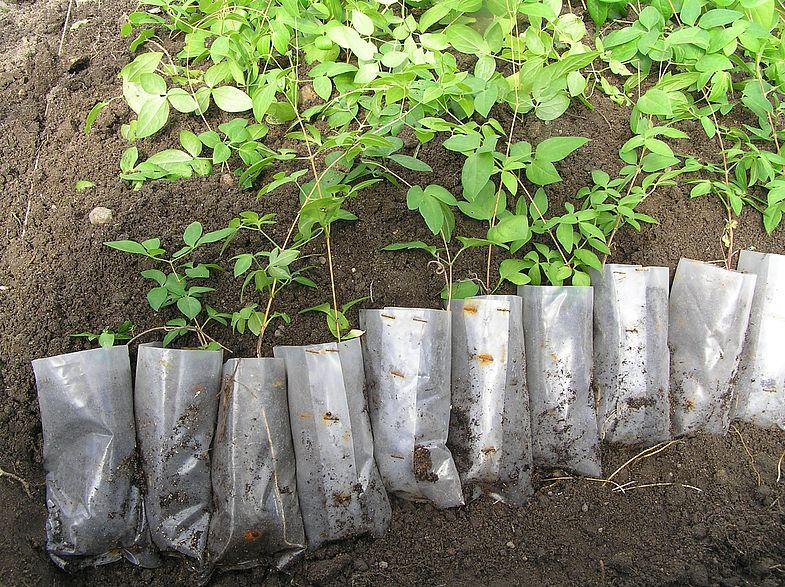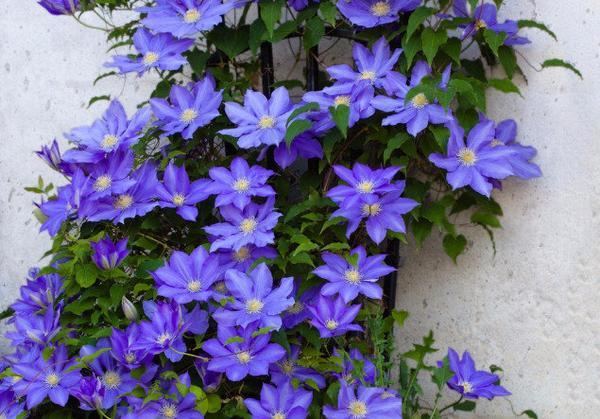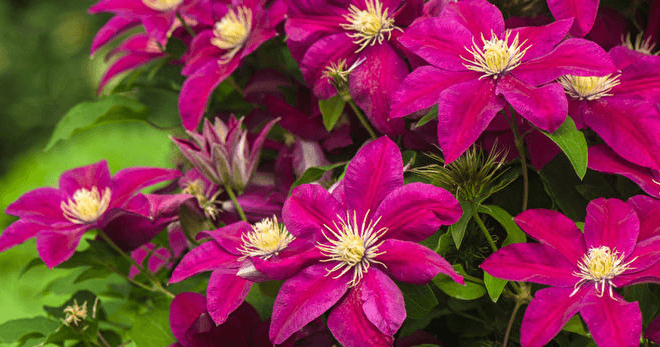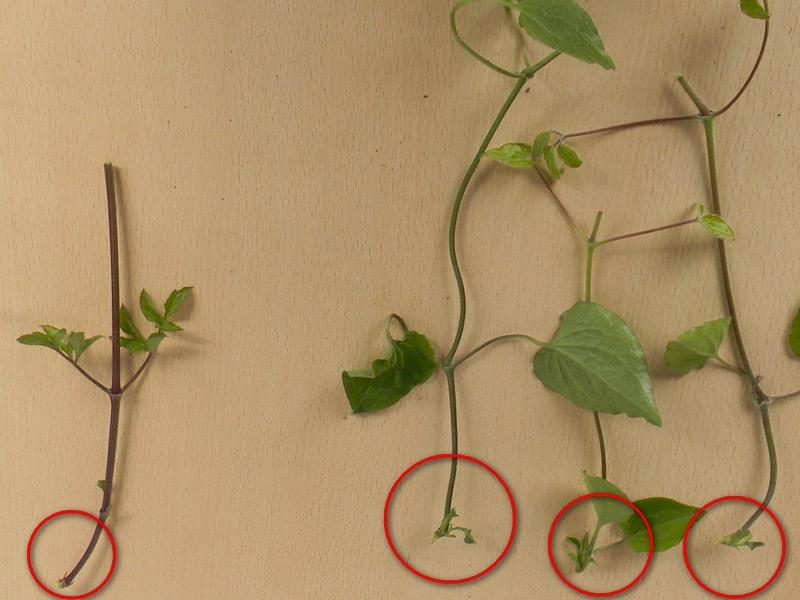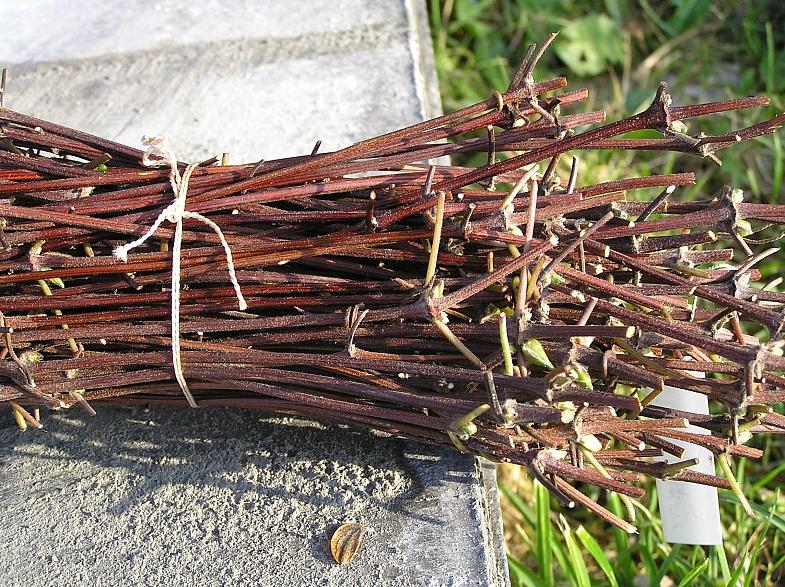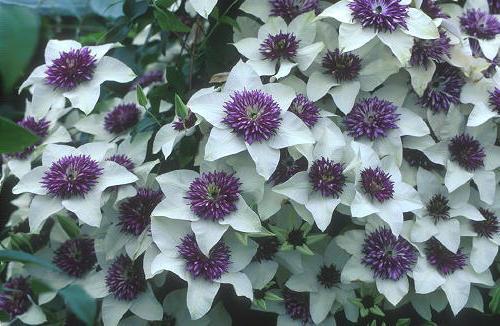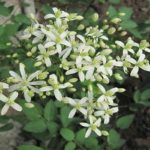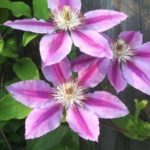Today's “hero” is often found in flower beds and lawns, but he appears there already in the form of a seedling. The burning question of how and where to propagate perennial clematis worries both experienced and beginner gardeners. The plant belongs to the genus of vines and decorates gazebos, courtyards and facades. Flowering (depending on the variety) occurs in different periods - from April to August inclusive.
When is the best time to propagate a plant?
The nuances of growing vines include the exact time of planting in open ground. Gardeners have empirically identified 2 suitable time periods:
- In the spring.
- In autumn.
Both options require compliance with the accompanying conditions, a combination of air temperature and soil moisture. In the spring, it is important to transfer the seedling before the heat sets in, and in the fall, before the cold begins. Both methods are equivalent; if you follow simple planting rules, they give the expected result - a healthy, flowering plant.
Gardeners practice soaking seedlings before planting - for an hour, in water, with the addition of potassium permanganate (potassium permanganate). A temporary “place of residence” of clematis is acceptable in any suitable place in the garden or plot.
Tying to a support, as well as installing a mulch layer, is one of the main planting conditions.
Reproduction is carried out in spring or autumn, to choose from. But experts consider autumn to be more preferable. Clematis is propagated using seeds, layering, cuttings or dividing the bush. The first method is more often used for plants with small inflorescences; for the rest, cuttings, division and layering are used.
in spring
For the planting procedure to be successful, you will first need to dig a hole of sufficient depth. A drainage layer (at least 15 centimeters) must be created at the bottom. Broken brick or large crushed stone will do. The mixture itself for clematis seedlings is prepared in several ways. For example, they mix fertile soil with rotted manure, wood ash, and sand. Superphosphate is added to the soil as a fertilizer. Everything is thoroughly mixed and poured into the pit.
The seedling is immersed in the mixture so that the root collar is hidden and sprinkled with earth. At the end of the process, the bush must be watered abundantly.In the spring, clematis is sometimes propagated using one of the existing methods, but most gardeners prefer to postpone this until the fall.
in autumn
Experienced “clematists” call September, and not October, as the time period for autumn planting, as is customary for some other plants. If the required deadline is missed, it doesn’t matter. The seedling will overwinter in the utility room, cellar or basement, and in the spring it will go into the ground.
The plant is capable of growing steadily in one place for 3 decades if the planting point is correctly (and immediately) determined. Sunbathing in open space is contraindicated for seedlings, and even adult clematis. It should also not be planted close to the walls of buildings (fences or fences). The liana is not durable - strong gusts of wind can easily tear off flowers or break the stem.
Clematis also does not like overly moistened soil or with a high level of groundwater, flooded soil, or acidic soil (with a pH value greater than 6.5 units). The soil mixture chosen is complex, with mandatory drainage of the bottom of the trench or hole (depth - approximately 2 times the length of the bayonet of a shovel).
It is better to sprinkle the neck of the root with sand, not earth, so that the 2 lower buds are hidden under it.
A correctly and timely planted plant will grow stronger over the winter, gain strength, and with the arrival of warmer weather it will begin to delight with large and frequent inflorescences. In the autumn they spend transplanting or propagating clematis. To do this, divide the bushes or the layering method.
In summer
The summer period is used for cuttings of clematis. This is better than purchasing a “pig in a poke” - cuttings from private owners or gardening partnerships with an unknown future. And cheaper too. To do this, choose the period from May to July (the exact period depends on the climate zone).
Methods for propagating clematis
Clematis liana can reproduce in several independent ways. This includes cuttings, layering, and dividing an adult plant. And there remains the most difficult and unpopular method - planting with seeds. If the minimum requirements necessary for growing clematis are met, the process will give the expected result.
Green cuttings
To grow a full-fledged, healthy plant, it is important not to skip the period when cutting cuttings begins. For the southern regions this is the time period from May to June, for the northern regions and the Middle Zone - June, the first ten days of July. Readiness for cuttings is checked as follows: the shoot, bent by hand, does not break. The second sign is the setting of buds on clematis (the appearance of single inflorescences).
It is equally important to prepare an earthen substrate for future clematis seedlings. It is usually mixed from river sand, peat and black soil. The reaction is slightly acidic.
Lignified cuttings
Of the hardened clematis cuttings, not all are suitable, but those with 2 internodes. They need to be carefully cut and then rooted into the ground. The mixture needs to be loose, with good permeability. It is advisable to fertilize it with peat or mineral complexes.
The cuttings are planted in a special way: one internode is sprinkled with earth, the other is left on the surface. The seedling needs regular, but not excessive watering. Upon reaching a height of 10 cm, the shoots are pinched to stimulate the growth of the root system. After about a year, stronger clematis are planted in open ground.
By layering
This method is simple but quite effective. Apply in autumn. The grown shoots of clematis are dug in, and over time they sprout fresh shoots and become independent plants.In the spring, the cuttings will sprout, strengthen, and in the fall they can be separated from the clematis mother trunk and planted in a new place.
Dividing the bush
To apply this method, you will need to dig up the entire clematis bush. Typically, this procedure is performed when the plant reaches seven years of age. Act carefully so as not to damage the roots of the bush. The plant is washed under running water until the earthen lump is washed away.
Next, with a sharp tool (knife or shovel), divide the bush into the desired number of parts so that the roots and buds are preserved. It is believed that division can be carried out without restrictions on the season - spring, autumn or summer.
Seeds
Planting by seeds requires “selection” of clematis fruits collected in the fall in order to select large and healthy ones. This condition must be met, otherwise nothing will work. Then the selected seeds are soaked (for 10 days, no more). Sowing is done in pre-selected seedling boxes and pots.
Fill the containers with a mixture of earth and sand. Leave the planted seeds in a greenhouse or greenhouse (the temperature should be at least 30 degrees). The seedlings are watered regularly, and when 2 leaves appear, pick them.
Planting seeds at home
Growing clematis at home is not a problem for those who are confident in their own abilities and understand what needs to be done. Attention will need to be paid to 2 points: the selection of seeds and the preparation of the soil mixture. If the seed is purchased, its germination rate can be unpredictable over a wide range.
The mixture is prepared from well-fertilized soil and river sand, thoroughly mixed together. Planted seeds will require care: watering and appropriate temperature conditions.Therefore, it is better to cover them with film, creating a mini-greenhouse.
How to plant seeds in the ground?
For successful planting of “landing”, stratification of clematis seeds is used. To do this, in early spring they are planted separately (large ones - 2 centimeters deep, medium ones - one centimeter deep) in a container. The mixture can be prepared from equal parts of peat, soil and sand.
Next, the box is kept at a temperature no higher than 5 degrees (but not lower than zero) in a closed place. For example, in the refrigerator. Plantings aged for 1 to 3 months are then placed on a windowsill (well lit, temperature not lower than 21 degrees) and watered regularly. Planting in open ground is allowed, but for this, a layer of snow of at least 20 centimeters is poured over the planted seeds.
Which method should I choose?
The choice of method for growing clematis depends on the goals and objectives of the grower and his capabilities. The most difficult way is propagation by seeds. If clematis is already growing on the site, then you can practice propagation by layering, cuttings or dividing the bush. The specific decision is also related to the age of the vine. Division is usually carried out for seven-year-old plants.
Rules for caring for flowers
Clematis is considered an unpretentious plant, but requires some care. The plant does not like acidic, waterlogged soils. Drafts and excessively sunny side are not suitable for it. Pruning is carried out in spring and autumn. At the same time, weak shoots are removed, flowering is controlled and the crown is formed. Autumn procedures consist of preparing for winter. The clematis bush is pruned and bent to the ground, sheltered from the cold. In the spring, as soon as the vine is open, it is permissible to apply fertilizer - organic matter or mineral complexes.

